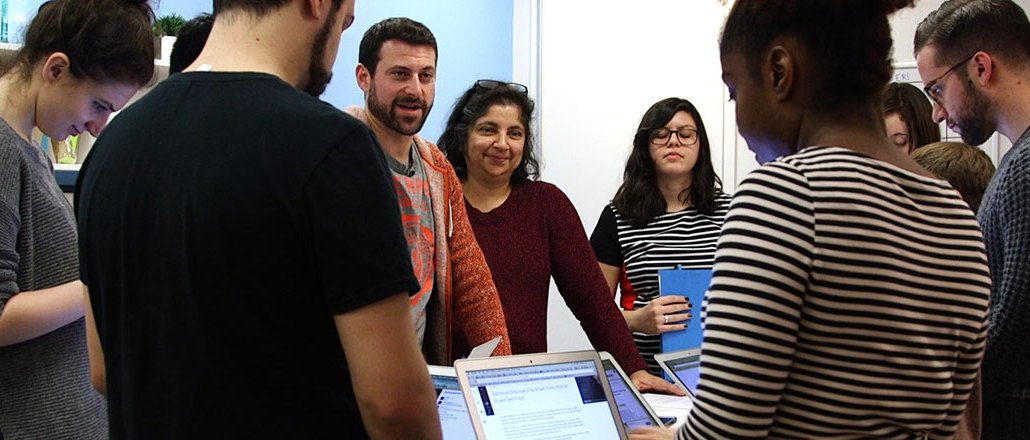
On the night of May 1, the Serbian Orthodox Cathedral of St. Sava Church in Manhattan caught fire — and Celeste Katz, a reporter based in New York, was on it. She went straight to the scene and started recording footage live, for Facebook.
This would have all made perfect sense if Katz was a metro reporter for one of the city’s daily tabloids. But she is, in fact, senior political correspondent for Mic, a national millennial-focused news publication. So why did she film a local church fire for Facebook Live? “We’ve embraced it at the desk level,” said Cory Haik, chief strategy officer for Mic. If a news story is breaking and it has the potential to be a compelling live video, reporters are encouraged to go out and shoot it live for Facebook.
Facebook’s embrace of live video has compelled many publishers to embrace the format, experimenting with various approaches and shooting styles to see what sticks on the platform. Mic, which did 150 million total video views on Facebook in March, is no different.
Live video has become an integral part of the publisher’s Facebook video strategy, said Haik. Currently, Mic is doing 10 to 15 live video streams across its seven Facebook pages every week. The format is such a priority that it’s now a regular part of the daily morning editorial meeting, where reporters and editors discuss which story ideas make sense for Facebook Live — coverage so far has included breaking news as well as campaign events, rallies, speeches and protests during the current U.S. presidential election. It also hosts a weekly policy roundtable featuring in-house reporters and guests.
But while Mic is doing plenty of live video on news and politics, it understands the massive potential of video that doesn’t even remotely qualify as news. Just look at the most popular Facebook live video to date: BuzzFeed’s attempt to explode a watermelon, which at its peak drew 807,000 live viewers.
Mic has been experimenting with similar types of content. It now has a weekly Friday live show (BuzzFeed’s watermelon video also went up on Friday) in which two reporters conduct various technology and science experiments. Two weeks ago, they attempted to see how many balloons it would take to lift a model house into the sky — like the house from the Pixar movie “Up.” That video has been Mic’s most successful Facebook live stream to date, with 90,000 views since April 29.
Efforts such as that have struck some as thirsty: blatant cribbing from BuzzFeed’s playbook, a cheap ploy for views.
Proposal for a new media vertical: Mic Gets Thirsty
— Aram Zucker-Scharff (@Chronotope) May 12, 2016
But Haik defends it. “It’s not any different than newspapers printing horoscopes, crossword puzzles, comics and movie listings, while covering Syria on the front page. You do all the things your audience might be interested in, because there are adjacent-type stories that can exist on Facebook.”
Looking ahead, Mic plans to weave in more regularly scheduled live programming on Facebook. In addition to the policy roundtables and the weekly Friday science experiments, it will launch “On the 7,” an interview series that takes place on New York City’s 7-line subway train. Another show, called “Writer’s Room,” will feature Mic writers cracking jokes about the news.
If all of this has a throwing-spaghetti-at-the-wall feel to it, that’s by design. Mic wants to see what sticks. Currently, the publisher’s live videos average 25,000 views. It’s in line with other millennial-focused news publishers like Fusion and Vox, which have plenty of live videos with view counts in the 10,000 to 30,000 range.
The focus is on building audience, but publishers are increasingly anxious about monetizing video there, too. Mic, for instance, developed a custom in-video banner ad unit that it ran on select editorial videos on Facebook. It was forced to cut the ads when Facebook said it violated its evolving branded content policies, according to the Wall Street Journal. (Haik declined to comment on the WSJ report.)
“There is not an exact path to monetization that’s right in front of us, but Facebook has been clear to publishers that they know it’s important to us,” she said. “We fully expect that there will be some vehicle for monetization.”
More in Media

Podcast companies turn to live events to capture growing advertiser spend
The surge in the number of live podcast events in 2025 reflects a broader shift: advertisers are betting bigger on podcasts — not just as an audio channel but as a full-fledged creator economy play.

Media Briefing: ‘Cloudflare is locking the door’: Publishers celebrate victory against AI bot crawlers
After years of miserably watching their content get ransacked for free by millions of unidentified AI bot crawlers, publishers were finally thrown a viable lifeline.

How Vogue could navigate potential industry headwinds as Anna Wintour — who agency execs say made ad dollars flow — brings on new edit lead
Anna Wintour’s successor at Vogue will have to overcome the myriad of challenges facing fashion media and the digital publishing ecosystem.





